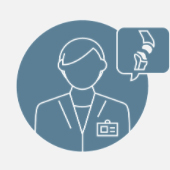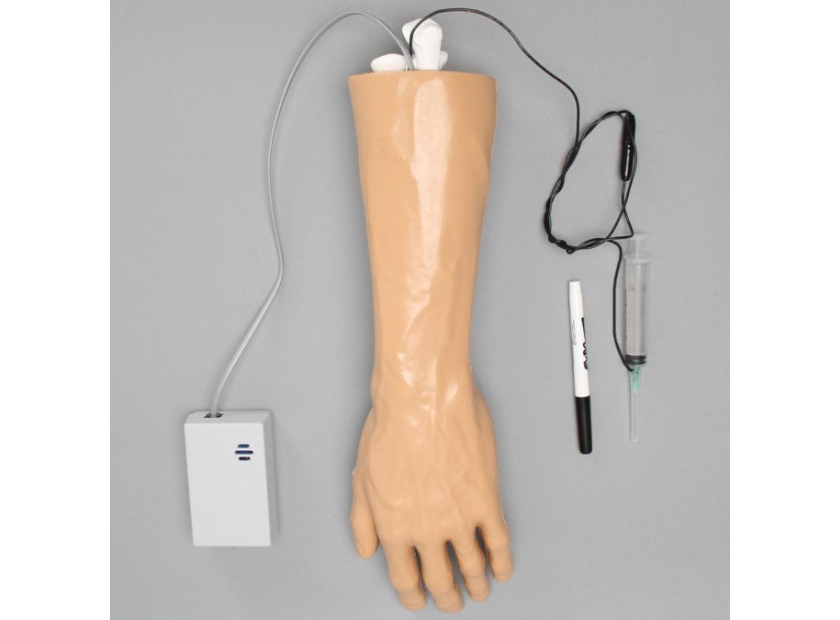5 Ways Injection Training Models Build Student Confidence Through Repetition and Feedback
Though it was first described more than 100 years ago, De Quervain’s tenosynovitis now sounds like a very modern ailment. Commonly known as “Nintendinitis,” “Playstation Thumb,” or simply “Texting Thumb,” this noninflammatory thickening of the extensor pollicis brevis and abductor pollicis longus tendons seems to be caused by the demands our digital society is putting on our thumbs. Human evolution hasn’t had time to adapt to the handheld devices that have become the centers of our lives, and the thumb’s lack of dexterity is causing people serious pain and discomfort from overuse.
The one positive amid this tech-terror development is that the next generation of doctors can become very skilled at administering the injections that can cure the condition. That’s partly because—as digital natives themselves—they’ll be familiar with its cause, and partly because the modern standard of injection training models has reached a point where there are specialized units for replicating this very condition and treatment.
As one form of 21st-century tech causes us pain, another emerges to deliver the cure.
Always Evolving Training Models
The specific tool developed to teach young physicians how to administer the steroid treatments used in unresponsive de Quervain cases is a Conductive Wrist Injection Trainer. It’s one of the modern generation of medical education simulation models that go beyond accurate anatomical recreation to add dynamic elements to a student’s pre-clinical training.
In the case of “Texting Thumb,” the model provides an authentic recreation of the tendon thickening and the resulting friction against the muscle sheath. Students can learn how to accurately avoid the complex metacarpal/carpal joints and muscle structure and deliver the steroid to the target.
And, if they miss, they hear about it. Literally. This model, like many of the advanced resources currently being produced, features haptic response that issues a noise when specific internal structures are touched with the needle—it doesn’t sound human, but it’s a nice reminder of the stakes of administering even the smallest invasive procedures.
It's just one of several ways advanced injection training models are teaching students to better administer hypodermic medications without risking patient safety.
These include:
- Specialized models for every body part
- Realistic materials replicate skin, bone, and muscle
- Accuracy that teaches precision
- Repetition and reliability that hones skills
- Evolving models that grow with the student
While there are specialized resources for injection training, all fields can benefit from the use of affordable, effective, reusable, medical training models.
Affordable, Accurate Solutions for Standardization
The traditional operating-room supervisory model of teaching surgical and specialized treatments is losing popularity among educators. For almost a decade, research has shown the old “see one, do one, teach one” approach is no longer optimal due to concerns over patient safety, expense, and a lack of standardization.
Engineered medical resources, such as an injection training model, are designed to replicate operating room settings and provide students with the hundreds of hours of repetition and experience they need to perfect advanced procedures. Assessments model use have shown they can be effective at transferring surgical skills to the operating room, reducing errors and the length of procedures, and increasing novice physician confidence.
If the latest generation of education training models can help new surgeons safely make the leap from the classroom to the operating room, then they become an affordable, reusable, and repeatable improvement on outdated training methods.
1. Specialised Models for Each Body Part
Human anatomy is a tangle of highly specialized organs, joints, muscles, and more. It takes real skill to effectively deliver injections where they’ll do good and no harm—skill that can’t be learned from an anatomy book alone.
To aid this skill development there are injection training models for:
- Shoulder
- Foot and ankle
- Humerus and tibia (with a pediatric option)
- Elbow
- Knee
As with the wrist trainer above, these models have conductive features that give audio feedback when a needle strikes something it shouldn’t have, as well as authentic subdermal structure.
2. Realistic Materials Replicate Skin, Bone, and Muscle
Not only is it important to have the models look right, they have to perform authentically as well. The latest range of engineered solutions come with foam cortical shell and solid foam materials that teach students about the force and pressures at play when administering injections.
These materials are perhaps even more important in the surgical models that replicate more robust interventions such as the use of screws.
3. Accuracy That Teaches Precision
All this accuracy and authenticity is designed to teach precision. Students need to develop mastery of their surgical tools, from needles and scalpels to arthroscopes and endoscopes. Teaching models give them the repetition and stress-free environment to learn extremely sensitive motor skills-based interventions.
4. Repetition and Reliability That Hones Skills
Unlike cadaveric or operating room-based teaching methods, using an engineering solution encourages reception and reliability. Models are often made of rigid foam and plastics that are affordable enough to service the classroom and robust enough to survive it.
Standardization of specialized skills and best practices is easier to achieve with common, reusable resources.
5. Evolving Models That Grow with the Student
The final step in maximizing the impact of engineered solutions such as an injection training model is to build in dynamic features that will expand functionality as the student matures. These features can include open or closed models, adjustable haptic feedback, and specialized tool use.
Importantly, instructors are able to collaborate on new designs if the continuing innovation of best practices deems it necessary.
Injection Training Models That Work
The continuing advances of the digital age may be putting unforeseen strain on our bodies, but they’re also delivering new ways to take care of ourselves. Advances in medical treatments seemingly occur in one field or another every day.
Instructors need to know that they can partner with leading medical education model designers to create the advanced resources needed to teach these new procedures.
From discrete injections to trauma response, there’s not a lesson worth being taught that can’t be improved with the use of an advanced education model.
The custom education models available through Sawbones can be detailed enough to replicate the most delicate of procedures. We can work with you to bring state-of-the-art techniques and best practices into the hands of your students. Contact us today at 206-463-5551 and start creating a better learning environment.

If you're seeking something you can't find on our website, our sales team is happy to help. We can either direct you to the right model or provide a free quote on the right custom project to meet your needs. Discover options with our clear bone models, laminated blocks, custom displays, or other machining projects.








